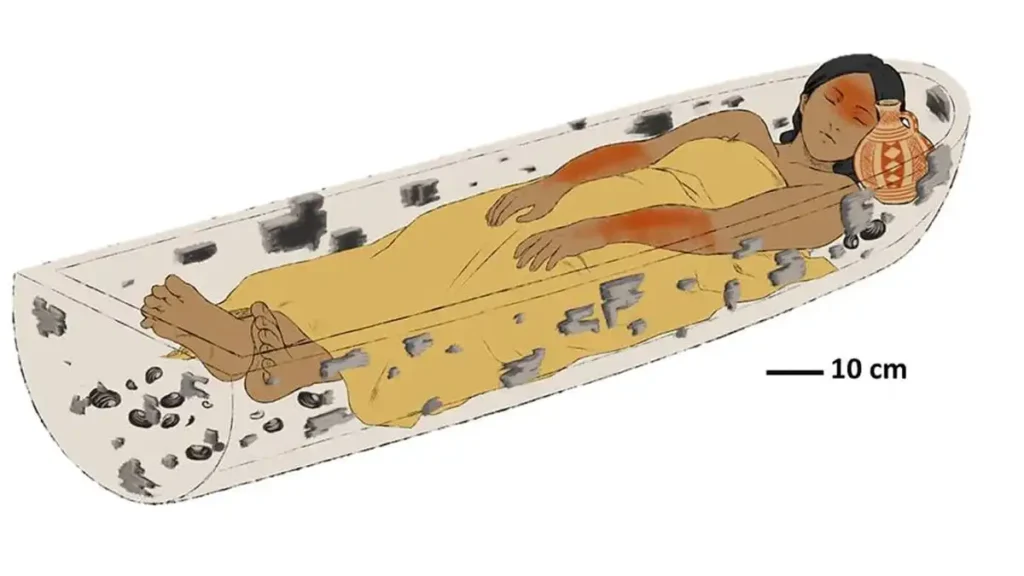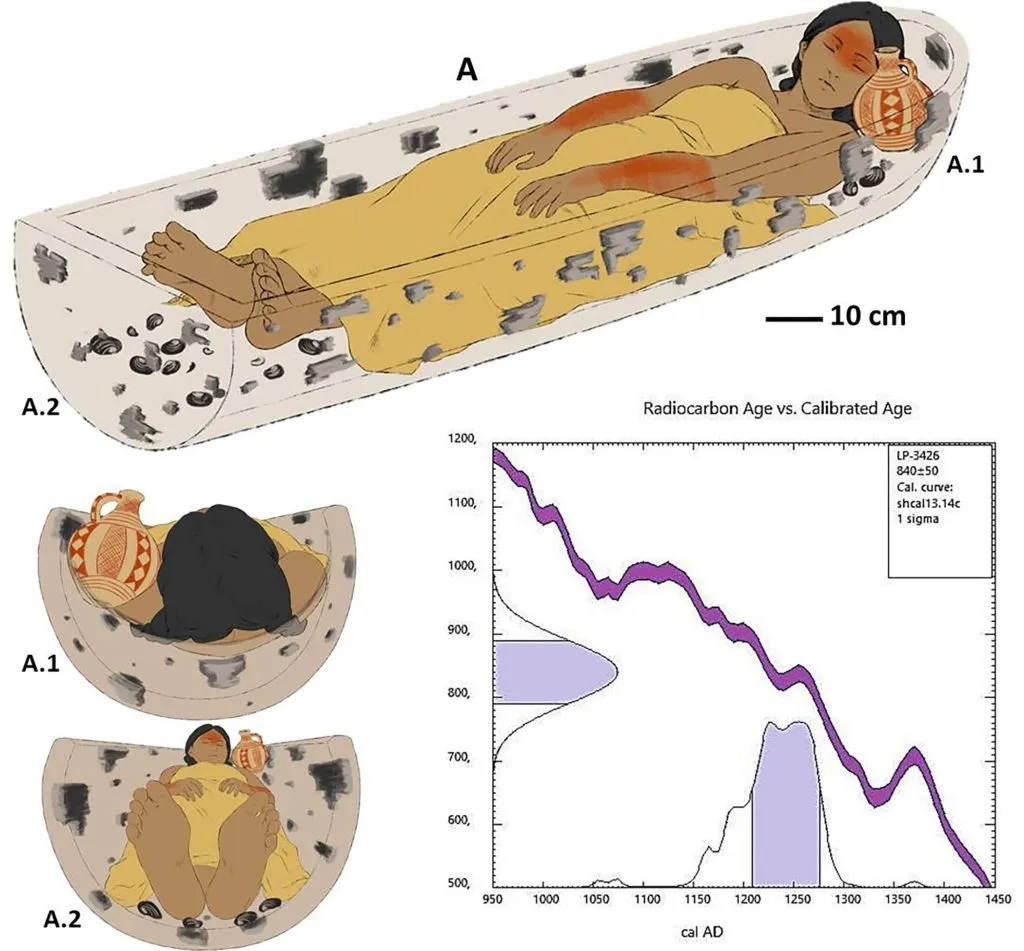According to recent studies, it has been discovered that around 800 years in the past, mourners laid to rest a young woman in a ceremonial canoe as a symbolic representation of her final passage to the afterlife in what is now known as Patagonia.

According to the study’s authors, the findings challenge the belief that canoe burials were only practiced after Spanish colonization and instead support the ethographic and historical evidence that suggests they were common throughout pre-Hispanic South America.
The first evidence of such a burial was discovered in Argentine Patagonia. In their publication on the open-access platform PLOS ONE, the team details their examination of the remains. The excavation site, known as Newen Atug, is located near Lake Lacár in western Argentina.

The remains of an individual, along with wood, freshwater mollusks, red pigments, and painted pottery, were found at the site. During that time, wooden canoes, called wampo, were crafted by hollowing out logs using fire. In Mapuche culture, a wooden canoe or a symbolic representation of the deceased was provided for their journey to the afterlife across a body of water.
The woman, estimated to be between 17 and 25 years old at the time of her death based on analysis, had a jug placed near her head and nearly 600 pieces of wood from a Chilean cedar tree surrounding her. The wood showed signs of charring. Examination of bone fragments indicated that she lived around 1142 AD, suggesting she belonged to the Mapuche culture and died before the Spanish arrival.

The discovery is significant as most canoe burials were typically reserved for men, making this female burial unique. This marks the first instance of a canoe-style burial being found in Argentine Patagonia.
The researchers suggest that this finding indicates the practice may have been more common than previously thought. The jug near her head and the presence of freshwater clams around her suggested a ceremonial burial arrangement. Her position strongly implied that she was laid in a canoe as a form of coffin before being buried.
Previous studies have proposed that canoe burials were part of a ritual to guide the deceased across spiritual waters to a land known as Nomelafken, where they would reside in the “destination of souls.”





